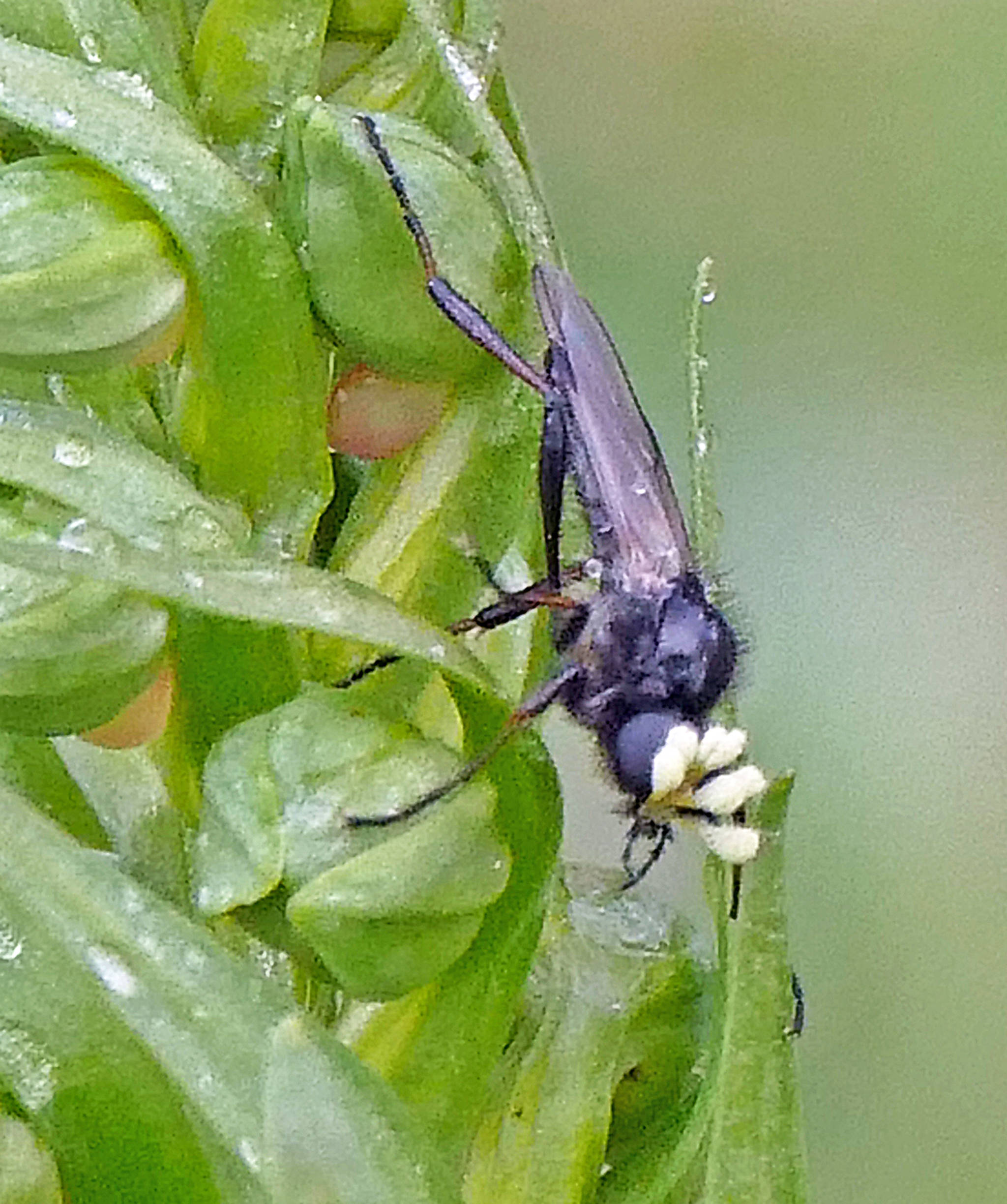Juneau is not rich in frogs of the amphibious kind, though we sometimes see a wood frog or a Columbian spotted frog. But we do have some non-amphibious organisms called “frog.”
This seems to be a good year for spittlebugs, clustered densely on fireweeds and more sparsely on other plants. Their proper common name is froghopper, so-called because the adults can leap many times their own body length (better than real frogs).
Inside those foamy spit-wads are juvenile forms (“nymphs”) that suck plant juices. They make the foam (sometimes called frog-spit) by bubbling air from the abdomen into their copious urine, along with some sticky fluid. The foam is said to be acrid and distasteful to would-be predators, and it provides a visual disguise. It also makes a protective microclimate around the nymphs, insulating from temperature extremes and preventing desiccation.
A multipurpose stuff, that foam, but when the nymph wants to breathe, it has to poke its abdomen through the foam to the outside in order to pull in air. The nymph goes through several molts inside its protective foam, but finally emerges as an adult that moves off to feed on various other plants, reproduce, and lay eggs that overwinter.
Up on Mount Roberts, there blooms a small, green, inconspicuous orchid called the frog orchid, perhaps because a frontal view of the flower reminded someone of a frog’s face. In Europe, frog orchids are pollinated chiefly by beetles and wasps but, very surprisingly, also by ants. On Mount Roberts, two local naturalists with a fascination for orchids have observed flower visitations by adult march flies (genus Bibio), and even seen flies emerging from the flowers with pollinia attached to them (see photo). These rather short-lived flies may visit several kinds of flowers, including cow parsnip.
As I nibbled lunch one day in the hot sun on the side of Gold Ridge, I watched worker bumblebees as they foraged. Some of them were dilettantes — zipping about, now on blue lupine, now on yellow avens flowers. But most of them were clearly focused on finding the tiny pink flowers of low-growing blueberries. These diligent individuals scrambled among the leaves that hid the flowers, burrowing under layers of leaves to find one little pink flower after another. The blueberry foragers had learned that those flowers were rewarding, so they were temporarily specializing on them, to the exclusion of other flowers.
When foraging bees specialize like that, they become increasingly efficient at handling the favored kinds of flowers, and they generally continue to specialize until those flowers are no longer profitable. (Honeybee workers do this, too.)
In the Dredge Lake area, we noticed some odd fuzzy bits at the ends of some alder branches. No, not the fluff of drifting willow or cottonwood seeds, although these fuzz-balls can also float on the breezes. This fluffy stuff was produced by woolly alder aphids, and the fluff is made of waxy filaments from abdominal glands. Like the foam of spittlebugs, the filaments are protective, disguising the aphid, shedding water and deterring predators with distastefulness. Well, most predators: at least two other insects (in some regions) manage to prey on these aphids and even steal the waxy filaments to decorate and disguise themselves. Woolly alder aphids, feeding on alder during summer, are all wingless females, reproducing asexually and their offspring are also all female. At the end of summer, winged aphids fly to the alternative host (maple), males appear and mate with the females, whose fertilized eggs overwinter on maple. They hatch in spring, feed briefly on maple leaves, and fly to suck the juices of alders.
True bugs
Before I leave the subject of bugs, I should maybe clarify something: We are inclined to call any insect a “bug,” perhaps especially the small ones that “bug” us, such as mosquitoes and blackflies. However, technically, “true bugs” belong to one taxonomic order that includes many kinds of plant-feeding insects, most of which suck up plant juices. Spittlebugs and aphids are true bugs. So-called ladybugs are not bugs, they are beetles. That’s the confusing problem with common names!
I can’t resist adding two unrelated observations that I found fascinating: I dropped by the NOAA lab to check out the aquaria. In the touch tank, there was a hermit crab living in a substantial whelk shell. This crab grabbed a small barnacle in its big right claw and easily crushed the shell. Then it delicately and adroitly dismantled the prey, neatly picking away the bits of crushed shell with the left claw while its mouthparts nibbled up the hapless victim. Nifty use of those claws!
Finally: I heard a ruckus out on my home pond one afternoon. Looking out, I watched an eagle just beginning to rise up after swooping down on a family of mallards, mama and two full-grown young ones.
The eagle had missed its strike, clearly, but mama duck was still in full cry as she pursued the eagle to its perch on the bank. The thwarted eagle sat on the bank for a while, looking disgruntled, while mama eventually quieted and returned to accompany her brood. Score one for mama duck!
• • Mary F. Willson is a retired professor of ecology. “On The Trails” is a weekly column that appears every Wednesday.

